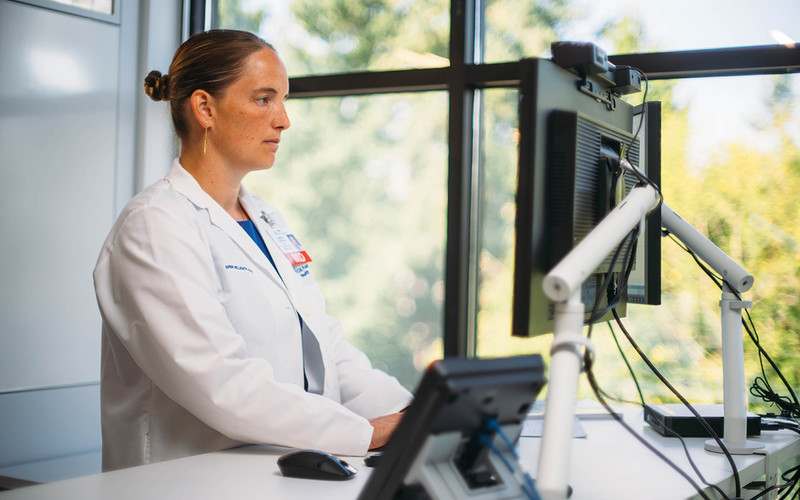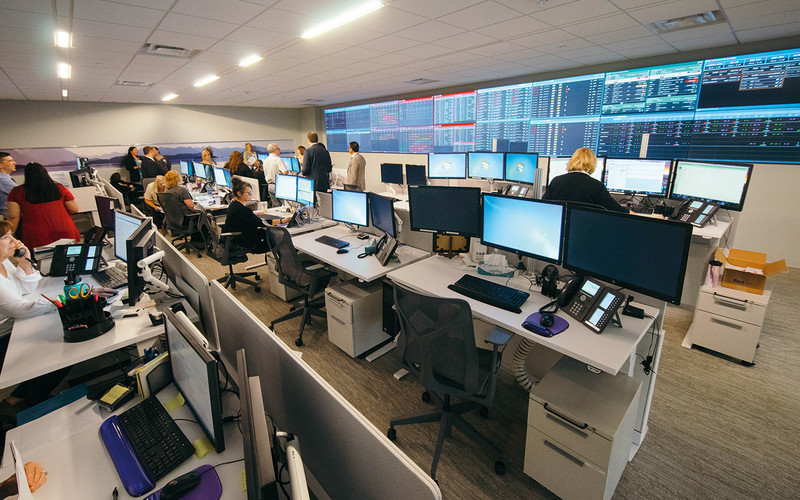Real-Time Data Provides Holistic View of Care Conditions
Mission Control at Virginia Mason Franciscan Health, in collaboration with GE Healthcare, uses Command Center technology that renders analytics from across the organization onto “tiles” that allow stakeholders to form a real-time, holistic picture of what is happening in patient rooms throughout the healthcare system. The analytics engine, developed by GE Healthcare, is served from the cloud over a private network connection to the hospital, using Microsoft Azure ExpressRoute.
The video walls — a large one in Mission Control that is 10 screens wide and two screens high, and smaller ones in three of the large hospitals — consist of 55-inch ultrahigh-resolution Planar displays with a 5-millimeter bezel.
The healthcare system’s executives had an “aha!” moment early in the pandemic, Metsker says, when leaders met via conference call for their first COVID-19 incident command discussion on a Sunday night. Everyone was at home, and no one knew how many negative pressure rooms, also called airborne infection isolation rooms, were currently available.
Metsker recalls saying that he’d log on to the tiles. “There was no other easy way to get that information, aside from each leader calling their individual house supervisors to ask. But I was able to provide it to the executives in the moment instead. There was a realization among the group that this is going to help so much,” he adds.















